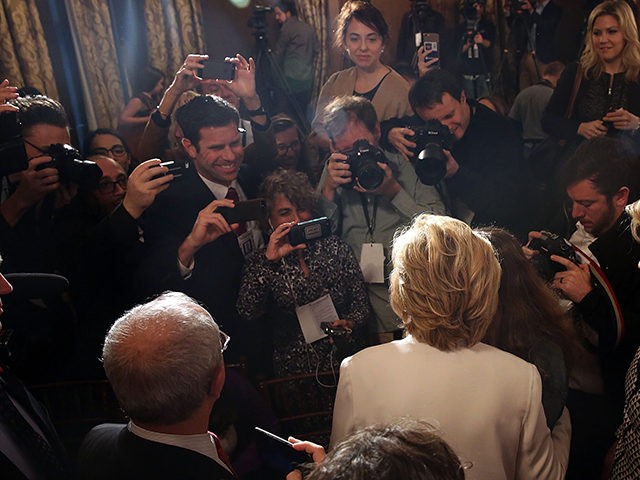In a report for Politico Magazine, Jack Shafer and Tucker Doherty analyzed the geographical data of where journalists work and determined that the so-called liberal “media bubble” is even worse than suspected.
The liberal bubble has only grown worse as the news business has transition from print media to online publications. As Shafer and Doherty report, “Today, 73 percent of all internet publishing jobs are concentrated in either the Boston-New York-Washington-Richmond corridor or the West Coast crescent that runs from Seattle to San Diego and on to Phoenix.”
From Politico Magazine:
As the votes streamed in on election night, evidence that the country had further cleaved into two Americas became palpable. With few exceptions, Clinton ran the table in urban America, while Trump ran it in the ruralities. And as you might suspect, Clinton dominated where internet publishing jobs abound. Nearly 90 percent of all internet publishing employees work in a county where Clinton won, and 75 percent of them work in a county that she won by more than 30 percentage points. When you add in the shrinking number of newspaper jobs, 72 percent of all internet publishing or newspaper employees work in a county that Clinton won. By this measure, of course, Clinton was the national media’s candidate.
Resist—if you can—the conservative reflex to absorb this data and conclude that the media deliberately twists the news in favor of Democrats. Instead, take it the way a social scientist would take it: The people who report, edit, produce and publish news can’t help being affected—deeply affected—by the environment around them. Former New York Times public editor Daniel Okrent got at this when he analyzed the decidedly liberal bent of his newspaper’s staff in a 2004 column that rewards rereading today. The “heart, mind, and habits” of the Times, he wrote, cannot be divorced from the ethos of the cosmopolitan city where it is produced. On such subjects as abortion, gay rights, gun control and environmental regulation, the Times’ news reporting is a pretty good reflection of its region’s dominant predisposition. And yes, a Times-ian ethos flourishes in all of internet publishing’s major cities—Los Angeles, New York, Boston, Seattle, San Francisco and Washington. The Times thinks of itself as a centrist national newspaper, but it’s more accurate to say its politics are perfectly centered on the slices of America that look and think the most like Manhattan.
Something akin to the Times ethos thrives in most major national newsrooms found on the Clinton coasts—CNN, CBS, the Washington Post, BuzzFeed, Politico and the rest. Their reporters, an admirable lot, can parachute into Appalachia or the rural Midwest on a monthly basis and still not shake their provincial sensibilities: Reporters tote their bubbles with them.
In a sense, the media bubble reflects an established truth about America: The places with money get served better than the places without. People in big media cities aren’t just more liberal, they’re also richer: Half of all newspaper and internet publishing employees work in counties where the median household income is greater than $61,000—$7,000 more than the national median. Commercial media tend to cluster where most of the GDP is created, and that’s the coasts. Perhaps this is what Bannon is hollering about when he denounces the “corporatist, global media,” as he did in February at the Conservative Political Action Conference. If current trends continue—and it’s safe to predict they will—national media will continue to expand and concentrate on the coasts, while local and regional media contract.
Read the rest here.

COMMENTS
Please let us know if you're having issues with commenting.